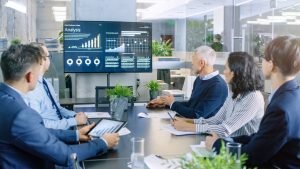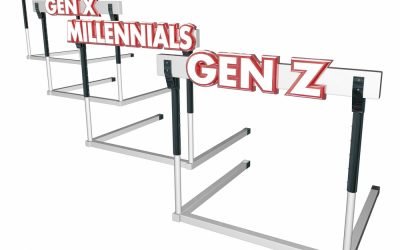
Selling Service vs. Products
Until recently, software was sold via license. Charging customers based upon headcount. Today, software is provided using cloud-based, downloads or Software-as-a-Service (SaaS) and customers are charged based upon consumption.
The shift from selling products to selling services is now commonplace in many industries, For example, truck rental companies no longer lease vehicles for a set time period but charge on a milage basis. So, what are the steps required to successfully move to a consumption vs. sales-only model?
The Customer’s Success
The digital transformation brought a shift in the way customers are viewed and relationships built. In the past, the larger the client the more you could sell based on headcount but now, the digital transformation has upended this. For example, Netflix consumes over 12% of all internet traffic but employs only 8.600 people worldwide. Although not large in physical size its consumption of cloud-based service is huge.
To be successful, a business shifting from product to service selling MUST rethink its pricing structure. This also means restructuring the sales force!
The first question is, who are your target customers and how do you currently sell to them? Sales staff normally generate leads, qualify the prospects, demo the product(s), and close the sale. A consumption-based service model requires an entirely different tact.
Under a consumption model, closing the sale is not the final step but a process step as the customer must ‘use’ the product before revenue is generated. This requires the sales team to have more technical expertise and further, to become semi-consultants to the client – helping them grow their service usage. The term ‘customer success team‘ best describes this sales technique.
It is now obvious that a shift to selling services vs. products necessitates a closer and ongoing relationship with customers. This, in turn:
- fosters the quick recognition and resolution of client pain-points
- provides the opportunity to obtain ideas on new product features or enhancements from users
- assists in finding new ways of using the product
- sparks innovation
Driving The Right Behavior
Developing a new sales strategy, re-thinking the approach to your current and future customers, and creating the optimal sales force are the requirements to successfully transform the sales function from a product to a service model. Along with these ‘overall’ requirements must also come a change in the performance of the sales team. Salespeople must now have the right mix of tech skills and customer-facing skills. Most salespeople have the people interface skill but often lack (and struggle with) the tech requirements of the position.
Management must ‘rework’ their pay plans when shifting to service vs. a product selling model. Compensation under a service model should be pegged to consumption vs. the traditional incentive which was linked to closing a sale.
The question of how successfully are customers using the product is vital under a consumption-based model, as the back-end of the sales process (after closing) drives revenue. Salespeople need to identify usage potential and demonstrate to customers how to add value by using the service. This type of training is much more complex than coaching sales staff on how to counter product objections or how to close a deal.
Summary
What are the customers’ (current and future) pain points and is the business’s value proposition strong enough to kill the pain? Additionally, the business must have the right sales strategy paired with enough innovation to engage customers. As more businesses start with or shift to consumption-based pricing and SaaS models they must realize the need to rethink and reconfigure the traditional selling process.





0 Comments